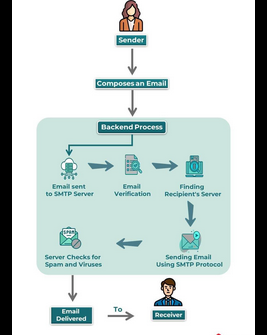The introduction of emails has had a significant impact on communication within companies, and for the most part, it has led to both improvements and challenges. This study answers the question, has the introduction of emails improved communication within companies?

Improvements:
Speed and Efficiency: Emails enable quick and efficient communication, allowing messages to be delivered and received almost instantly. This has significantly reduced the time it takes to convey information compared to traditional postal mail or other forms of communication.
Accessibility: Email provides a convenient and widely accessible means of communication. Employees can access their emails from various devices, facilitating communication regardless of physical location.
Documentation and Record-Keeping: Emails serve as a written record of communication, which can be valuable for documentation, reference, and accountability. This can be particularly useful in business transactions, project management, and dispute resolution.
Global Communication: For companies with global operations or teams spread across different locations, emails enable communication without the constraints of time zones and physical distance.
Formal Communication: Emails provide a formal and structured communication channel. Official announcements, updates, and documentation can be disseminated to a large audience simultaneously.
Challenges:
Information Overload: The ease and speed of email communication can contribute to information overload. Sorting through a large volume of emails can be time-consuming, and important messages may get lost in the noise.
Miscommunication: Written communication, including emails, can sometimes lack the nuances of face-to-face interaction. This can lead to misunderstandings, misinterpretations, and communication breakdowns.
Lack of Personal Touch: Emails may lack the personal touch of verbal communication. In certain situations, face-to-face or voice communication may be more effective, especially for sensitive or complex discussions.
Distraction: Constant email notifications and the expectation of immediate responses can be distracting, potentially affecting overall productivity. Employees may feel pressure to constantly monitor and respond to emails.
Security Concerns: Email is susceptible to security risks, including phishing attacks, malware, and unauthorized access. Organizations need to implement robust cybersecurity measures to protect sensitive information.
Loss of Non-Verbal Cues: Non-verbal cues, such as body language and facial expressions, are absent in written communication. This can make it challenging to gauge the emotional tone or intent behind a message.
In conclusion, while email has undoubtedly improved the speed and efficiency of communication within companies, it comes with its set of challenges. Organizations need to find a balance by integrating email communication with other forms of communication, fostering a culture of clear and effective written communication, and implementing strategies to manage the potential downsides, such as information overload and security risks.
